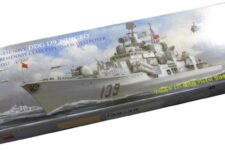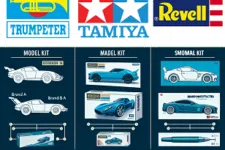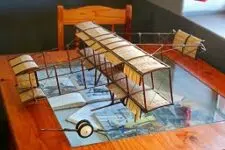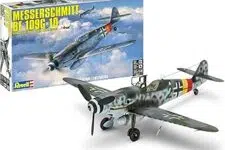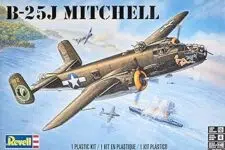For those who are interested in collecting miniature vehicles, one of the most popular hobbies is the art of weathering, which involves the process of personalizing model cars. Whether they prefer classic cars or muscle cars, enthusiasts often choose to create a unique weathered appearance. The process adds a personal touch to the vehicles. This description includes elements such as rust, filth, and even worn-out upholstery.
All the Necessary Supplies:
You will need sandpaper, modeling ink, and a small drill (pin vise).
You will also need a craft knife and modeling clay, which is often known as “Green Stuff” and is extensively used in the industry.
To achieve the illusion of chipped paint on your model automobile, you should begin by applying a base layer of metallic silver paint. This paint will give the impression that the car is made of steel. When the base layer has had a chance to dry, you may then proceed to paint the car in the manner of your choice, making sure to leave some of the metallic paint visible in a random pattern. Areas that are prone to dents and scratches, such as the wheel well or the fender/bumper, are particularly good candidates for this technique’s effectiveness.
To achieve a genuine rust impression, you can apply a mixture of water and a dark red or brown ink that has been diluted in a ratio of 50/50 to specific regions of the model automobile. There will be a darker, rust-like color as a result of the ink seeping into fissures. The application of many layers of ink will result in a more dramatic impression.
If you want to provide an additional degree of authenticity to the model car, you can create physical damage to it. Both a craft knife and a tiny drill are suitable tools for doing this task. To provide the impression of wear and tear, for instance, holes can be bored into the doors to make the vehicle look like a Mafia automobile from the 1940s. Alternatively, pieces of the wheel well might be removed to produce the same effect.
After painting, use low-grit sandpaper to add texture to the car’s frame. This will result in a finish that is less refined. Be sure to apply only a modest amount of pressure to prevent the paint from being entirely removed.
It is also possible to provide a more worn appearance by applying different paint colors to different parts of the vehicle. For instance, the use of a drab brown color in particular locations might create the impression that an automobile is in the process of being repainted.
When weathering, remember to let the inks dry before adding more details. The amount of time it takes for an application to dry can range anywhere from a few minutes to up to twenty-four hours, depending on how thick it is.
Remember, once you apply certain methods of weathering, such as creating physical damage, you cannot undo them. The consequences of dents and corrosion cannot be easily undone, whereas paint may be scraped or painted over without much difficulty. So, only use these methods if you’re sure of the final look you want.
Showcasing a large selection of Scale Model Kits.
Search
Featured Posts
Gundam Model Kits Bandai: A Hobby That Brings Anime to Life
The Legacy of Bandai Gundam KitsWhy Build Gundam Model Kits...
Scale Model Supplies: The Buyer’s Guide for Realistic Builds
You can find everything you need for your next plastic...
CATEGORIES
Scale Model Kits Online Store
Product Blogs
Apollo 11 Saturn V

Dragon Models Apollo 11 Saturn V
Plastic Model kit (paint & glue required)
Newly tooled Saturn V rendered with details
Slide-molded S-II second stage w/J-2 engines
Propellant reproduced
Apollo launch escape system (LES) and Command Service Module (CSM) rendered with details
View on Amazon
As an Amazon Associate, I earn from qualifying purchases.
Copyright © 2025 Scale Model Kits Online Store

